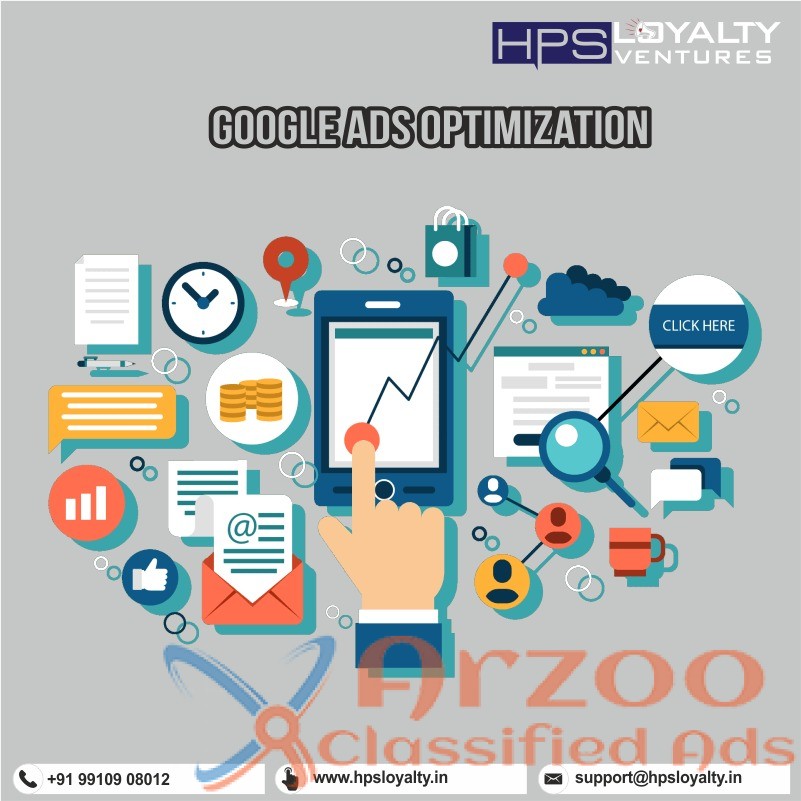Are you struggling to make the most out of your Google Ads campaigns? Looking for some effective tips to optimize your ads and boost your overall performance? You’ve come to the right place! In this blog post, we will dive deep into the world of Google Ads optimization tips and provide you with valuable insights to maximize your results.
Running Google Ads campaigns can be challenging, especially when you’re not getting the desired outcomes. It’s frustrating to spend time and money on ads that don’t bring in the expected conversions. This is where optimization plays a crucial role. By implementing effective optimization strategies, you can enhance the performance of your Google Ads and drive better results for your business.
So, who can benefit from Google Ads optimization tips? The answer is simple – anyone who is running Google Ads campaigns! Whether you’re a small business owner trying to increase your online presence or a digital marketer aiming to improve the ROI of your clients’ ad campaigns, these optimization tips are for you.
Let’s take a look at some key Google Ads optimization tips:
1. Ad Relevance
When it comes to Google Ads optimization, ensuring ad relevance is of utmost importance. Your ads should align with the keywords, ad groups, and landing pages to deliver a cohesive message to your target audience. Make sure to include the right keywords in your ads and create compelling ad copy that resonates with the user’s search intent.

Personal Experience: I was managing a campaign for an e-commerce store that sells fitness equipment. By optimizing the ad relevancy and aligning the ad copy with the targeted keywords, we saw a significant improvement in click-through rates and conversions. Users found the ads more relevant and were more likely to click and make a purchase.
By focusing on ad relevance, you can enhance your Quality Score, reduce costs, and boost your overall campaign performance.
2. Ad Extensions
Utilizing ad extensions is another effective Google Ads optimization tip. Ad extensions add additional information to your ads and provide more value to the users. They can include features like sitelinks, callouts, call extensions, and structured snippets, among others. By leveraging ad extensions, you can increase the visibility of your ads, improve click-through rates, and drive qualified leads.

Personal Experience: One of our clients wanted to drive more phone calls to their business. By implementing call extensions in their Google Ads, we saw a substantial increase in calls from interested users. The ad extensions helped provide quick access to the business phone number, making it easier for potential customers to connect.
Don’t miss out on the opportunity to make your ads more engaging and informative using various ad extensions.
3. Landing Page Optimization
A crucial aspect of Google Ads optimization is optimizing your landing pages. After users click on your ads, they should be directed to a relevant and user-friendly landing page. Ensure that your landing page aligns with the ad’s message, highlights the key benefits of your product or service, and includes a clear call-to-action. Optimize the design, loading speed, and mobile-friendliness of your landing pages to deliver a seamless user experience.

Personal Experience: We worked with a client in the travel industry who was running Google Ads campaigns to promote their vacation packages. By optimizing their landing pages and making them more visually appealing and user-friendly, we observed a significant increase in conversions. Users were more likely to book a vacation after landing on a page that showcased stunning images, provided detailed information about the packages, and offered a simple booking process.
Invest time in optimizing your landing pages to improve the conversion rate and maximize the return on your Google Ads investment.
4. Ad Scheduling
Ad scheduling, also known as dayparting, is an effective Google Ads optimization technique for targeting your ads to specific days and times when your target audience is most active. By analyzing your campaign data and understanding the behavior of your target audience, you can schedule your ads to appear at optimal times, increasing the likelihood of engagement and conversion.

Personal Experience: We managed a campaign for a B2B software company that primarily targeted business professionals. By using ad scheduling, we optimized the campaign to show ads during business hours on weekdays. This strategy contributed to a higher click-through rate and improved lead generation.
By strategically scheduling your ads, you can make the most out of your ad budget and reach your target audience when they are most likely to engage.
Question and Answer Section: Google Ads Optimization Tips
Q: How frequently should I monitor and optimize my Google Ads campaigns?
A: It is recommended to monitor your campaigns regularly, at least once a week, to identify any underperforming ads or keywords and make necessary adjustments. Optimization is an ongoing process that requires consistent monitoring and refinement.
Q: Should I focus on increasing my Quality Score? How does it impact campaign performance?
A: Yes, improving your Quality Score is essential. A higher Quality Score can result in better ad rankings, lower costs per click, and improved overall campaign performance. It indicates that your ads are relevant to the users’ search queries, which leads to higher click-through rates and conversions.
Q: Can I use negative keywords to optimize my Google Ads campaigns?
A: Absolutely! Negative keywords allow you to exclude certain search terms from triggering your ads. By using negative keywords effectively, you can eliminate irrelevant clicks, improve ad relevance, and increase your campaign’s ROI.
Q: How can I measure the success of my Google Ads optimization efforts?
A: To measure the success of your Google Ads optimization, track key metrics like click-through rates, conversion rates, cost per conversion, and return on ad spend. Regularly analyze these metrics to understand the impact of your optimization strategies and identify areas for further improvement.
Conclusion of Google Ads Optimization Tips
By implementing the above Google Ads optimization tips, you can unlock the full potential of your campaigns and achieve better results. Remember to focus on ad relevance, leverage ad extensions, optimize your landing pages, and strategically schedule your ads. Regular monitoring and refinement are essential to keep your campaigns performing at their best. Start implementing these tips today and take your Google Ads campaigns to new heights!
If you are searching about Google Ads Optimization Tips – SF Digital Studios Blog you’ve visit to the right page. We have 5 Pictures about Google Ads Optimization Tips – SF Digital Studios Blog like Top 5 Google Ads Optimization Tips – SF Digital Studios Blog, Top Google Ads Optimization Tips – SF Digital Studios Blog and also Google Ads Optimization – Arzoo Classified Ads. Here you go:
Google Ads Optimization Tips – SF Digital Studios Blog

www.sfdigital.co.uk
optimization
Top Google Ads Optimization Tips – SF Digital Studios Blog

www.sfdigital.co.uk
kharawala uzair
Top 5 Google Ads Optimization Tips – SF Digital Studios Blog

www.sfdigital.co.uk
Google Ads Optimization Tips [Checklist] – SF Digital Studios Blog
![Google Ads Optimization Tips [Checklist] - SF Digital Studios Blog](https://www.sfdigital.co.uk/blog/wp-content/uploads/2020/11/Google-Ads-Optimization-Tips.png)
www.sfdigital.co.uk
uzair kharawala
Google Ads Optimization – Arzoo Classified Ads

www.arzooclassifiedads.club
optimization
Google ads optimization tips. Kharawala uzair. Top 5 google ads optimization tips

